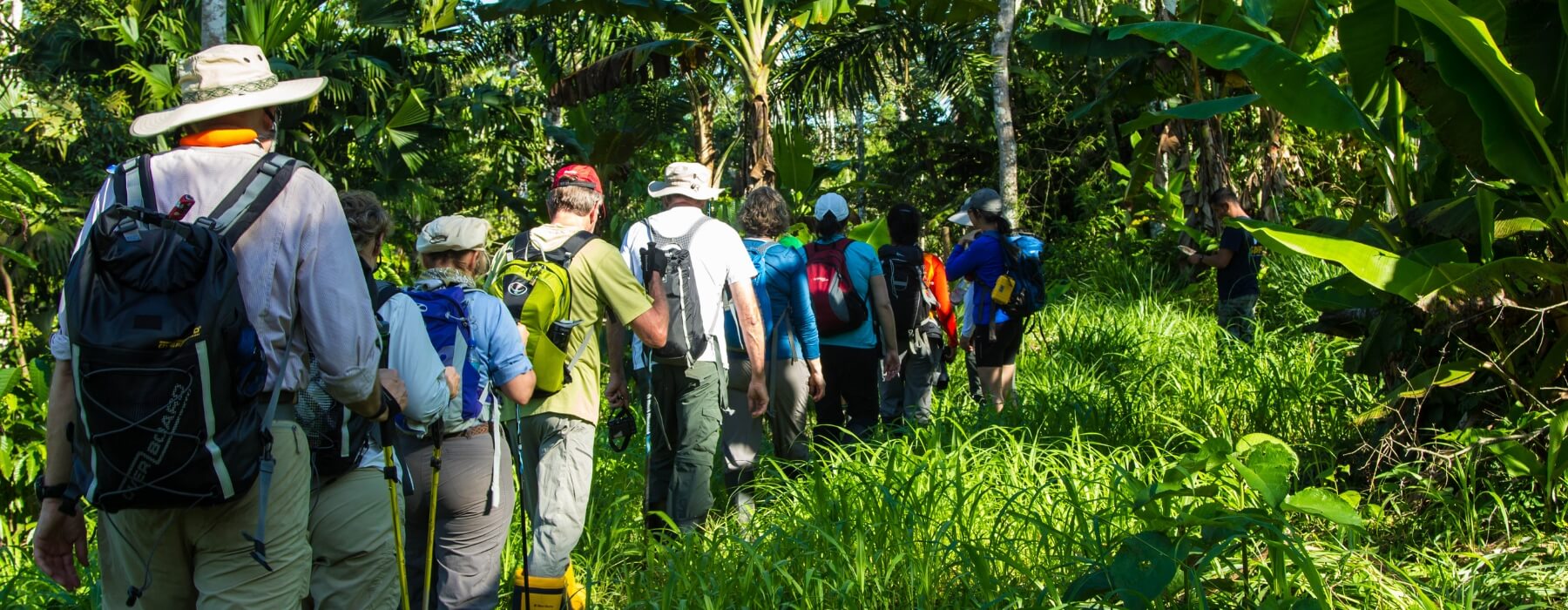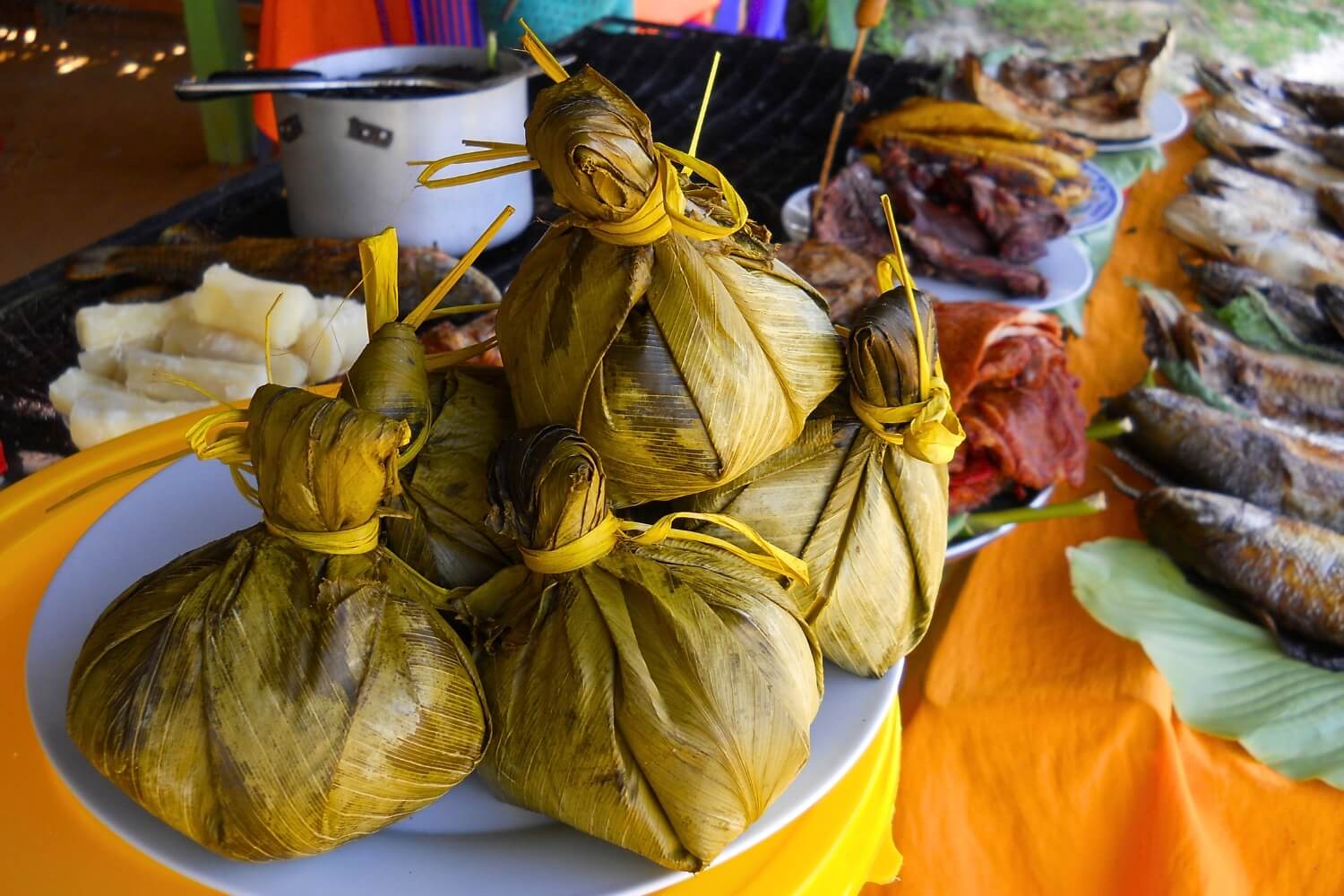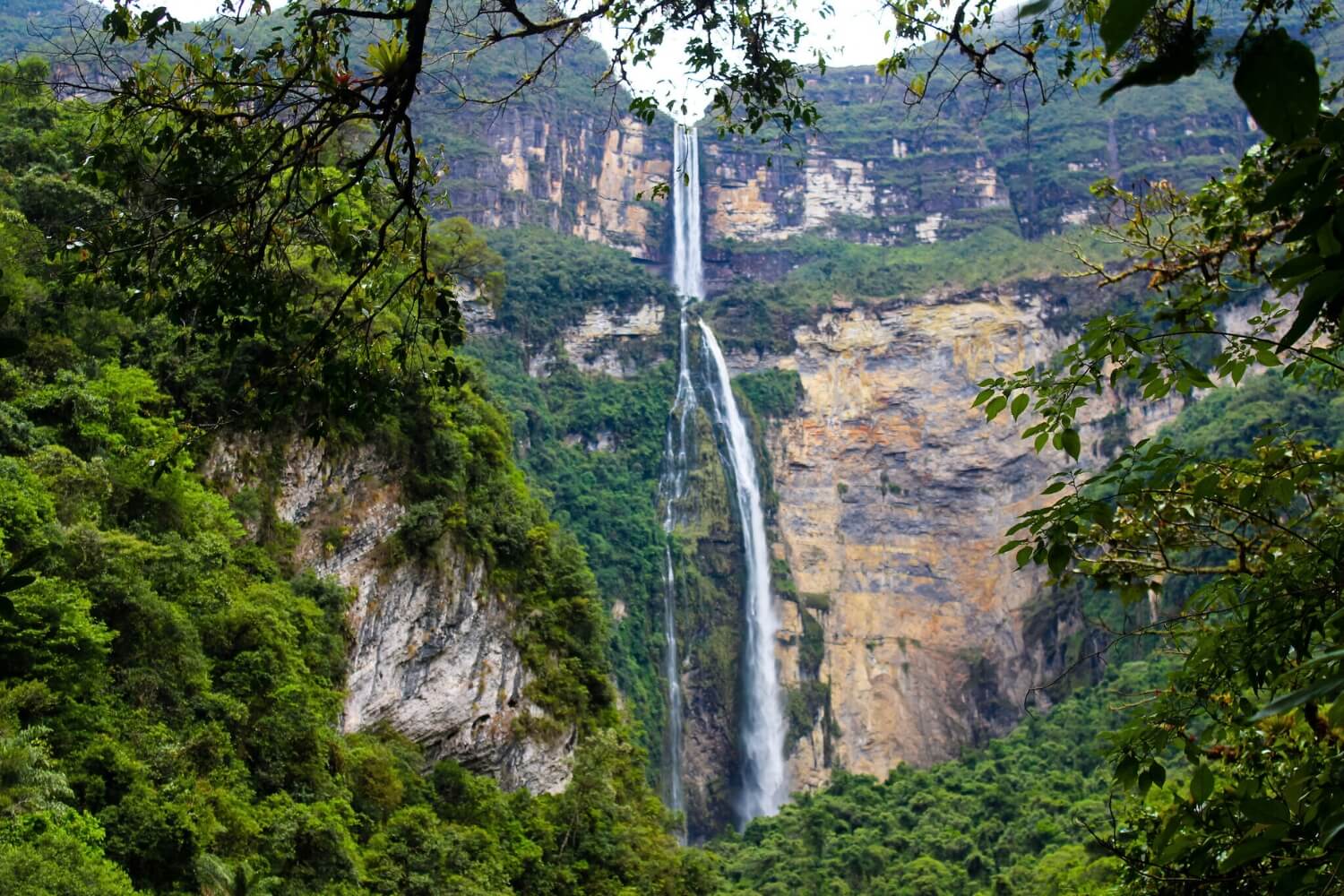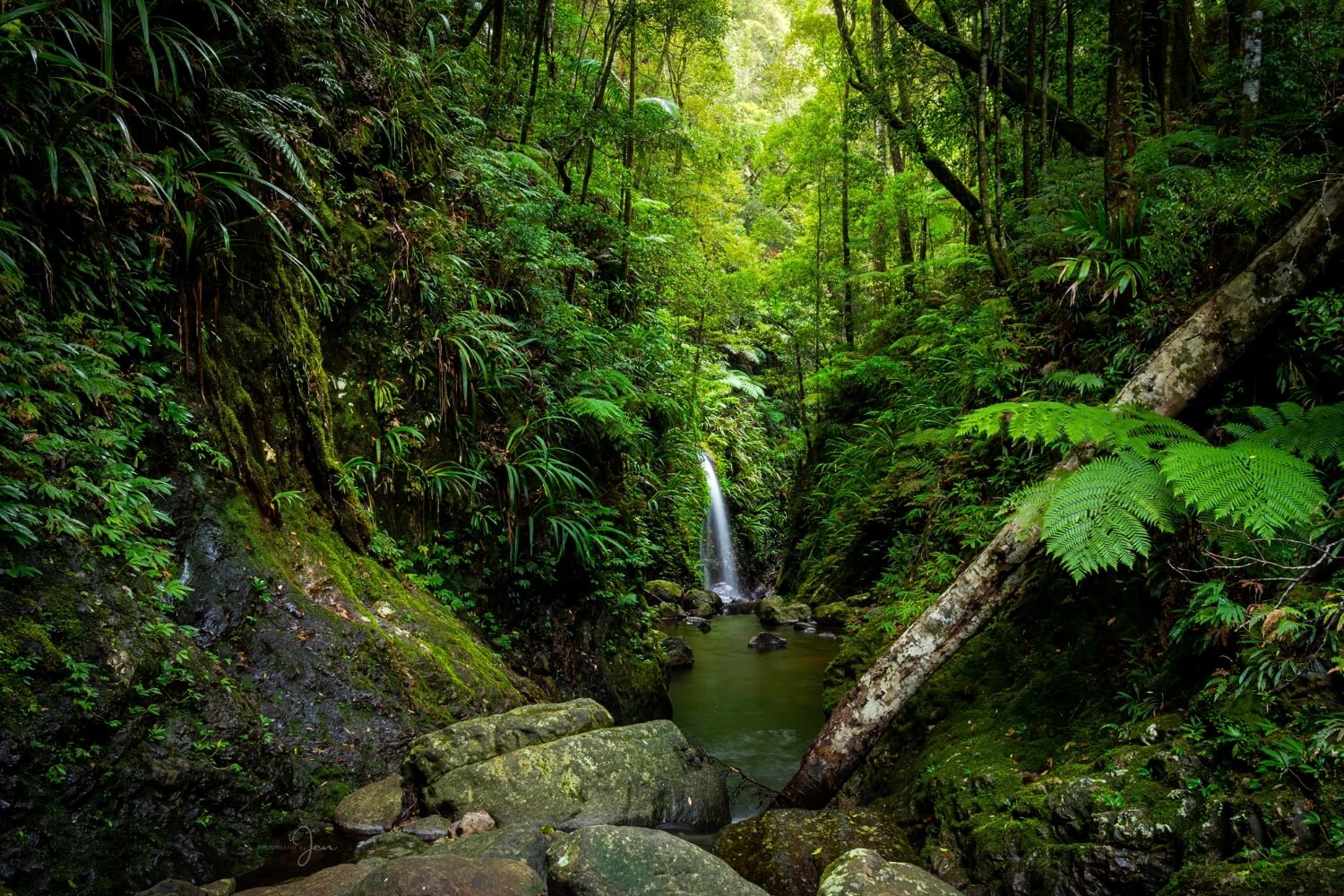
Visiting the Amazon Rainforest is hugely popular, and for good reason. It’s one of the most bio-diverse areas in the entire world. The Amazon is the largest in the world, spanning nine countries and covering almost 7 million square kilometers of South America. Shared across Brazil, Bolivia, Peru, Ecuador, Colombia, Venezuela, Guyana, Suriname and French Guiana, the sheer size and scale can be difficult to comprehend. With 10% of the worlds known biodiversity, the Amazon is home to thousands of fascinating species including pink river dolphins, sloths, anacondas and caiman.
Iquitos, Tambopata and Manu Park are all home to comfortable lodges nestled deep within the rainforest, offering the perfect base for an Amazon Jungle holidays. All Amazon holidays are inclusive of incredible activities, which typically include, jungle hikes, canopy walks, piranha fishing and canoe trips.
If you’ve never thought about going to the Amazon rainforest, you should. Be it the fact that, well, it’s the Amazon, the obscene amount of biodiversity, or maybe it’s because you love animals, whatever the reason, the Amazon jungle is the trip of a lifetime. Here are some reasons you need to stop what you’re doing, go buy some bug spray, and book your ticket to the Amazon rainforest right now.
If you are interested in knowing the traditions of the native peoples of the Amazon jungle, in the south of Peru is the Manu National Park, which houses several native communities, whose members can teach you their ancestral knowledge, to fish, hunt, and Collection of different plants for therapeutic and food uses. These communities have currently organized to receive foreign visitors, thanks to the help of training provided by local governments and non-governmental organizations, several of its members also speak Spanish. It is recommended to organize the visit in advance, since the leaders of these communities are very suspicious of infrequent visitors, never venture on your own to these human settlements, always have the help of a local guide who knows the uses and customs of these communities.
The Manu National Park and its adjacent area, in the Manu Biosphere Reserve, are characterized by their great cultural diversity. The high Andean part is inhabited by Quechua peasant communities; the Amazon by the Matsigenka, Yine Harakmbut, Yora (Nahua), Nanty (Kugapakori) and “Mashco Piro” indigenous peoples, who, like some Matsigenka and other settlements, still remain in voluntary isolation or in initial contact with the greater society.
In the Andean zone, the Manu National Park adjoins the Quechua Peasant Communities of Mendozayoc, Pucará, Solan, Televan, Sahuay, Jesús María, Lali, Patanmarca, Lucuybamba, Huaccanca, Pilco Grande, Pasto Grande and Jajahuana. In the Amazon area, the Manu National Park adjoins the Native Communities of Santa Rosa de Huacaria, Palotoa Teparo, Shipetiari, Isla de los Valles and Diamante. Inside the Amazon forest are the Native Communities of Tayakome, and its Mayzal annex, and Yomibato, with its Cacaotal annex. Likewise, throughout the territory of the Manu National Park, there are Matsigenka populations in initial contact and Mashco Piros populations in voluntary isolation.

The natives of the Amazon use rainforest plants regularly, but 90 percent of the ones they use have not been studied by modern science. And with 40,000 species of plants, there’s a reason people who have given up on modern Western medicine are flocking to the jungle in search of cures. If you’re more of a plant person, the Amazon also offers plenty for green-fingered explorers. Some of the most fascinating and unusual species include giant water lilies (or Victoria Amazonica), spaghetti flowers, and monkey vines. It is also a brilliant destination for tree lovers. You will not be able to walk through the jungle without coming across the gigantic roots of the ceiba tree. These giants can reach more than 60 meters in height. And, for the foodies among us, you’ll also get to see the plants that some of our favorite foods come from, like coffee, cocoa, and bananas.

The Amazon rainforest is teeming with wildlife, with an estimated of 10% of the planet’s known species, so there’s plenty for wildlife enthusiasts to get excited about. Hiding high in the canopy you might spot slow-moving sloths and all manner of monkeys including howler, spider, tamarin, capuchin and squirrel – to name but a few. Bring along your binoculars too for a closer look at brightly-billed toucans and scarlet macaws. Lurking on the rainforest floor and on the leaves of lower lying plants you might see sinister-looking snakes such as green anacondas, boa constrictors and eyelash vipers. Also, look out for tiny poisonous dart frogs and cleverly camouflaged insects like the leaf-mimic katydid and moss-mimic stick insect.
Living on the river banks you might find capybara families playing, caimans looking for their next meal and tapirs nibbling on low-hanging branches. Whilst in its murky waters, you may see pink river dolphins coming up for air and giant otters tucking into their fish suppers. The deeper you go into the jungle on guided tours the better chance you get at catching rare glimpses of remote jungle animals. The Amazon rainforest is home to 205 of the world’s bird species, which includes colorful parrots and toucans. Take a bird watching tour through the jungle and catch glimpses of the most colorful birds you’ll ever see.

Since your visit to the Amazon jungle begins, you will be able to practice walks on the trails inside the forest, in search of wildlife. For this, it is recommended to use rubber boots, since it will go through muddy terrain and streams. In the jungles of Tambopata you can also practice kayaking in the Sandoval lakes and the Tambopata river; There are also canopy circuits and hanging bridges from where you can observe various animals in the treetops.
In some jungle tours, night walks are also organized to look for wildlife, such as frogs, snakes, owls, etc. It is necessary to carry a good headlamp. In contrast, there are visits to the macaw clay licks, these activities are usually done at dawn, to have a better enjoyment you should take good binoculars, since these natural attractions are located on the banks of the rivers, and the place of observation It is done from a camouflaged booth more than 200 meters away.
Other activities that can be done is fishing in the rivers with hooks and nets, these activities are done in the company of the aborigines of the jungle. If you are a lover of the customs of the Amazonian communities, you can participate in the hunting of monkeys or other mammals, usually you have to spend at least 1 month with the communities to understand their beliefs and cultures.
In certain more important parties and celebrations you can be a part of them, such as the preparation of Masato (alcoholic drink made from cassava), boat building and for the most daring, get a tattoo with local plants.

Because the Amazon landscape is unlike anything you’ve seen before. Our planet is immensely beautiful due to its diversity. The Amazon jungle of Peru has its own magic, it represents a natural spectacle that you will not be able to admire anywhere else. Many areas in the jungle are difficult to get to and some are still unexplored. You can take boats to remote areas in the Amazon and stay in beautiful isolated resorts and eco-reserves in the jungle. The remoteness gives you more peace and quiet and a better chance to see wildlife.
Tired of the routine and the city that never stops? In the Amazon, time seems to stop. With no cell phone signal, and often without electricity, it is the perfect opportunity to connect with yourself. Replace honking with birdsong or street lights with a starry sky. Each region of Amazon rainforest has its charm. The green thicket of the forest stands out under the clear blue sky, with dark waters over which brightly colored birds fly overhead. Each landscape is unique and beautiful, especially at sunset.
In the forests of South America there are three types of ecosystems, those that are more than 3,800 meters where the cloud forests are located, these habitats are very important to maintain a healthy environment by retaining the large amount of moisture and precipitating it in large streams that then they will form the mighty rivers of the Amazon. Also, in these ecosystems there is one of the largest records of bird sightings, and the only bear in Latin America, the Spectacled Bear. In the transition zone is the forest of scrubs and timber trees, which are home to a large number of mammals, birds and insects. And in the lower zone, the flooded areas of the Aguajales, whose ecosystems are the most propitious for the nesting of some species of parrots and macaws. In any of the regions you visit, the Amazon jungle will offer you unique landscapes, with the purest air on the planet, and surrounded by a large river basin.

There are approximately 3,000 kinds of fruits that grow in the rainforest that are edible, and most of them you’ve never seen before. The fruits have a strange appearance, some are spiky and look like dragon eggs and some are pods, but they all have a delicious and unique flavor. The regional cuisines of the great Amazonian plain are very well related to the food produced by farmers, it could be confirmed that this food is almost entirely organic and free of chemical substances.
The diet is fundamentally based on fish, bananas, cassava, peppers and rice. You can also taste the exotic meats of alligator, turtle, monkeys, piranhas and peccaries. The Belen de Iquitos market is a great center, where the producers bring their spices and fruits harvested in the Amazon forests. The most famous Amazonian dish in Peru is Juane, which consists of a chicken leg covered with rice and spices, which are wrapped in bijao leaves, which gives it a special touch of jungle flavor. If you are a very intrepid traveler you can try the Suri worms, or the Siquisapa ant.
It is also recommended to try the Chonta palm tree, which in its inner bark has a delicious white fiber, which is prepared in very thin strips very similar to noodles, once mixed with olive oil and spices, it has a very exquisite flavor. As for the drinks, there are from distillates to macerates, with herbs and forest fruits. But the most exotic drink that is had in the Amazon jungle is the famous masato, which is prepared based on Yuca, which is said to be fermented with saliva when the community members chew it and throw it into a pitcher for fermentation. natural.
In summary, we can indicate that the food from the Amazon jungle is diverse and is adapting to new gastronomic trends, but in fact the country with the best option for gastronomy tourism is Peru, because it has various unique inputs that They will leave you very happy to visit these lands.

With a length of about 6,400 kilometers (nearly 4,000 miles), it is the world’s second longest river and the world’s largest river by volume. Containing a whopping 20 percent of Earth’s fresh water, the Amazon River is (controversially) the world’s longest river, meandering from high in the Andes to the Atlantic Ocean. As you can imagine, being so big, it has a lot of things living in it. About 2,500 different species live in the river, including many unique to the Amazon, such as the pink dolphin, giant otter, and Amazon manatee. It is also home to giant water lilies, which can grow to be 8 feet long.
Embark on one of the Amazon cruises, which will take you to discover the Amazon in all its fullness. As enormous as the Amazon is, discover it as you move along the river that takes you to experience every inch of the jungle. You will enjoy all the comforts in the heart of the jungle. During this expedition you will have an experience that leaves room for relaxation and peace, which makes you feel at home even when you are in the heart of the immense Amazon jungle.
Feel the energy of the mightiest river in the world. Few experiences are as inspiring as feeling the waters of the Amazon River under your feet. As you progress on your journey, you go deeper into the Amazon jungle, discovering a landscape that leaves no one indifferent. The immensity of the Amazon reconnects you with yourself. By escaping, breathing new destinations, discovering the beauty of such an immense landscape.

Since South America has two very marked environments such as the Andes mountain chain and the great Amazonian plain. In certain parts of the Latin American territory, there are capricious geological formations that form the most spectacular waterfalls. Between the high mountains and the Peruvian jungle there is a region of high jungle where there are beautiful and high waterfalls. These are very photographed and visited by tourists from all over the world. A great attraction is the Gocta waterfall found in Peru, with a fall of 771 m, it is the third highest waterfall in the Andean country. The landscapes of each destination that you visit in Peru will fill you with a lot of color and impressive areas of life, where you can practice bird watching, and if you are very adventurous you can take a bath with its fresh waters.
Due to its peculiar geographical location, halfway between the high jungle and the low jungle, Tarapoto is an area with a great abundance of waterfalls and waterfalls. It is also an area with a warm tropical climate. For this reason, when one arrives in Tarapoto, one of the things that one desires the most is to visit one of these spectacular natural wonders and dive directly under its torrent. The waterfalls of Carpishuyacu, Yumbilla, el Breo, Ahuashiyacu, are the most spectacular. They have an exotic charm that makes them directly related to the image of some adventure stories about the Amazon jungle. They are hidden in the middle of a tropical forest and their waters slide down to a pool of an intense greenish color where it is possible to bathe.

There is nothing more beautiful than watching a sunset in the Amazon river, you will get the reflection of the sun in the water, watch the sunset in the Amazon, watch the greens of the forest turn black while the sky lights up with oranges and reds, the colors bounce off the water, the sounds of the jungle come alive. Because when you take a trip to the Amazon jungle you will be delighted with its sunrises and sunsets. The best season to enjoy beautiful sunsets is from May to October. You will be able to enjoy this natural spectacle from your lodge or the boats along the Amazon River. A very famous event that occurs in the months of June and July in the town of Paucartambo, is the sunrise, which can be seen from the Tres Cruces mountains, from where you can see the wonderful sunrise for having the free view of the low jungle. Tres Cruces is called the “Balcón del Oriente” and is one of the only two places in the world where this spectacle of lights and colors of all gamuts can be observed.
The Tres Cruces de Oro viewpoint offers one of the best sunrises in the world. It is located a few hours from the town of Paucartambo, 105 kilometers by road from the city of Cusco. But this natural spectacle does not happen every day of the year. It only occurs in the months of June and July. If you are lucky and there are no clouds at dawn that prevent you from seeing the landscape, you will enjoy one of the best natural spectacles in Peru.
Tres Cruces de Oro is a natural observatory on top of a mountain from where you have a panoramic view of the sunrise in the jungle of Cusco: a spectacle that offers an unusual beauty in the world. It is also recognized as the ‘most beautiful sunrise in the world’. The mountain where you can see this spectacle is called ‘Acjanacu’. In Tres Cruces de Oro the so-called ‘White Lightning’ takes place. This natural phenomenon occurs when the sun appears on the horizon and light passes through the humid atmosphere. The result is a kind of mirage, where the sun is distorted in a very special way. The effect is that of three suns, one of which jumps from one side to the other. It is known that this strange phenomenon only occurs in two places in the world: Japan and Cusco.

Well, the Amazon rainforest has 390 billion of them! So much so that 20 percent of Earth’s oxygen is produced there, and it’s so thick that it takes 10 minutes for water to hit the ground when it rains. With 5.5 million square kilometers of lush green forest, there is much to explore here in the “lungs of the Earth.” While deforestation has decimated many parts of the rainforest in Brazil, the Peruvian Amazon remains pristine. Since 2014, Peru’s government has worked to conserve its rainforest as part of a plan to maintain many of the country’s heritage sites.
You can use “Amazon sounds” to help you fall asleep at night, but there’s nothing like hearing them live. The howls of monkeys, the chirping and buzzing of insects, and the singing of birds make any time of day or night musical in the Amazon.


Visit the beautiful Amazon jungle of Tambopata in South America and enjoy the most impressive natural spectacle, we are referring to the blue and yellow macaw clay lick. Accompanied by the best local guides.


Explore the Manu Amazon Rainforest & Inca Trail hike to Machu Picchu, you will enjoy the best adventures in Peru, exploring amazing inca trail routes and the best amazon wildlife with our local tour guides, in small groups.

Dive deep into the culture and landscapes of Peru with this adventure to Machu Picchu, the Amazon and more. Search for wildlife along jungle trails and rivers in the rainforest from a comfortable lodge then head up into the Andes to Cusco, the capital of the Inca empire.


Manu National Park is located in the Amazon rainforest of Peru. This attraction is one of the few places on the planet that still maintains its great biodiversity of birds, mammals, reptiles and many medicinal plants.


The Manu Jungle tour goes to one of the largest life biosphere reserves in the World. You will enjoy wildlife, traditional villages, with the best specialized guides.


Manu National Park is an excellent way to experience an intense amazon wildlife.Is the biggest Amazon rainforest in the Americas, its incomparable natural wealth, host the greatest amount of flora and fauna of the world.
